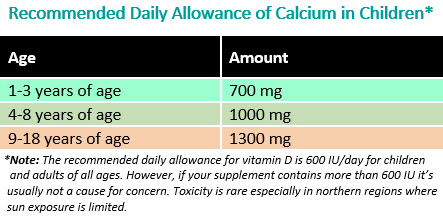By: Anthony Porto, MD, MPH, FAAP
For parents of children who follow a gluten-free diet, grocery shopping is a little easier than it used to be. There's growing awareness about celiac disease and other conditions aggravated by gluten, a protein found in many common foods that contain wheat, rye, barley and other grains.
Nearly 30% of Americans try to avoid gluten for health reasons, and some stores have entire sections dedicated to gluten-free products. But making sure the foods you select don't contain gluten—and do contain the nutrients children following gluten-free diets need—can still be a challenge.
Here are some tips to make following a gluten-free diet a little easier:
Shop the perimeter of your grocery store first.
Fresh meats, vegetables, fruits, dairy, eggs, and legumes are always kept along the outer areas of the grocery store. These items are also 100% naturally gluten-free. When planning your meals, start with these items. Then all you should worry about are seasonings and snacks.
Noodle around with new staples.
Experiment with gluten-free grains like millet, amaranth and quinoa. In addition to being high in protein and fiber, these grains contain micronutrients like magnesium, phosphorus, manganese, potassium, zinc, iron, folate, thiamin, copper, and riboflavin.
Avoid oats (at first).
Oats contain a protein called avenin, which is structurally like gluten. Once your child has been following a gluten- and oat-free diet and his or her symptoms have resolved — typically between 6-18 months — talk with your child's doctor about gradually reintroducing gluten-free oats into your child's diet. Note this must be done gradually as the increased fiber may cause constipation.
Look for added gluten in processed foods.
Pre-packaged and "ready-made" items often contain additives to increase shelf life, and these additives can contain gluten. Flavoring, sauces (including soy sauce, which is made from wheat) and seasonings can all contain gluten. Gluten also may be added to some products such as breakfast bars to boost protein content. Even soups can have gluten from thickening ingredients. You just need to know the words to look for on the label.
Fill the nutrient gap.
Since most gluten-free grains are unfortified, vitamin and mineral deficiencies are more common in children following a gluten-free diet. Some potential deficiencies include fat soluble vitamins (A, D, E, and K), calcium, vitamin B12, folic acid, zinc, magnesium, iron.
Here's how to boost needed nutrients in your child's diet:
-
Consider a multivitamin. A daily children's multivitamin can help, because it has calcium, vitamin D, and iron in it — nutrients not provided by the fortification of gluten-free grains. Note also that gummy vitamins do not contain the iron, B1, or B2 that children on a gluten-free diet may be missing. Check the brand's content at
www.glutenfreedrugs.org.

-
Stock up on nutrient-rich foods. Many vegetables and fruits, meats and seafood, dairy foods and nuts and seeds are excellent sources of vitamins and minerals to help ensure children on a gluten-free diet get the nutrients they need.
See table below for ideas.

Choose high-fiber gluten-free grains.
A common side effect of a gluten-free diet is constipation. Many gluten-free products use low-fiber substitutes like rice, corn, tapioca, and potato flour instead of wheat, and their lower fiber content may not be enough to keep a child regular.
If you buy rice, make sure it's higher fiber, whole-grain brown rice. Look for other high-fiber, gluten-free alternatives such as beans, amaranth, quinoa, chickpea, and millet. Note that kids should aim for 20-30 grams of fiber per day depending on age.
Remember:
Manufacturers change ingredients and production methods frequently. This means a product that may have been gluten-free in the past no longer is. If you're ever in doubt, don't hesitate to contact the manufacturer with specific questions. As a consumer, you have every right to know exactly what's in your food.
Additional Information & Resources:
About Dr. Porto:
 Anthony Porto, MD, MPH, FAAP is a board-certified pediatrician and board-certified pediatric gastroenterologist. He is an Associate Professor of Pediatrics and Associate Clinical Chief of Pediatric Gastroenterology at Yale University and Director, Pediatric Gastroenterology at Greenwich Hospital in Greenwich, CT. He is also the medical director of the Yale Pediatric Celiac Program. Within the American Academy of Pediatrics, Dr. Porto sits on the PREP Gastroenterology Advisory Board and is a member of the Section on Gastroenterology, Hepatology and Nutrition. He is also a member of the North American Society of Pediatric Gastroenterology, Hepatology and Nutrition's Public Education Committee, a pediatric expert on nutrition for The Bump's Real Answers, and is the co-author of The Pediatrician's Guide to Feeding Babies and Toddlers. Follow him on Instagram @Pediatriciansguide.
Anthony Porto, MD, MPH, FAAP is a board-certified pediatrician and board-certified pediatric gastroenterologist. He is an Associate Professor of Pediatrics and Associate Clinical Chief of Pediatric Gastroenterology at Yale University and Director, Pediatric Gastroenterology at Greenwich Hospital in Greenwich, CT. He is also the medical director of the Yale Pediatric Celiac Program. Within the American Academy of Pediatrics, Dr. Porto sits on the PREP Gastroenterology Advisory Board and is a member of the Section on Gastroenterology, Hepatology and Nutrition. He is also a member of the North American Society of Pediatric Gastroenterology, Hepatology and Nutrition's Public Education Committee, a pediatric expert on nutrition for The Bump's Real Answers, and is the co-author of The Pediatrician's Guide to Feeding Babies and Toddlers. Follow him on Instagram @Pediatriciansguide.